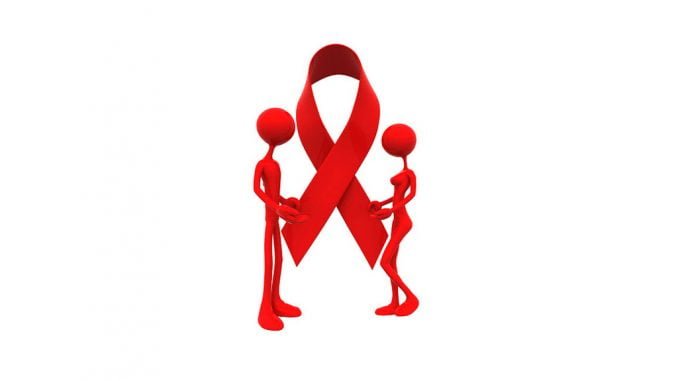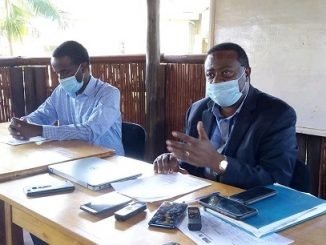
Kampala, Uganda | By Henry Zakumumpa | In Uganda, AIDS began in the early 80s in Rakai in southern Uganda. A strange disease presented with severe weight loss among those it afflicted.
The locals termed it ‘silimu’ because all those that suffering from this strange illness suffered severe weight loss and were ‘slim’.
Those who were infected died quickly after showing full-blown symptoms. Many blamed the strange disease on witchcraft or a ‘curse’ – it was an alien disease shrouded in mystery.
At its peak, HIV/AIDS prevalence in Uganda was as high as 30 per cent at some antenatal sites. President Yoweri Museveni became interested in the virus initially because many of the soldiers he sent to Cuba for military training were returned home after testing positive for HIV. You have a problem, Fidel Castro counseled Uganda. At the time, being diagnosed with HIV was akin to a death sentence.
In the early 1990s, we watched helplessly on what was then UTV (Uganda Television) as celebrated musician Philly Lutaaya wasted away before our very eyes with no available medicines to stall the progress of the indomitable virus.
At the outset, Uganda adopted an open and aggressive campaign of HIV prevention, going on the offensive against the virus. Those old enough remember the haunting drum beats early in the morning on the then state owned Radio Uganda, warning of the AIDS avalanche. Billboards were erected along streets imploring people to ‘love carefully’ or to practice ‘zero grazing’.
The Afrigo band sang ‘speed kendeeza’; condoms became a part of everyday life, sold at every corner shop. In music, in the newspapers, on the street, in schools the rallying cry was the same: AIDS kills
take care.
Astonishingly, the prevalence rates were cut to single digits and Uganda became an AIDS success story. Where other African countries lived in denial and in tragic silence, with Thambo Mbeki of South Africa denying the scientific link between HIV and AIDS, Uganda’s campaign was led from the highest office in the land.
Uganda even led through innovation by way of the first community response among people living with AIDS such as The AIDS Support Organization (TASO) whose model has been replicated on the continent. Uganda was a pioneer of antiretroviral treatment (ART) scale-up in 2004. Currently in Uganda, about 53 per cent of those in need of ART receive it, which is higher than the global average.
Uganda became a reference point for the rest of the globe, thus attracting unprecedented international aid for combating AIDS. The non-governmental organization industry in Uganda was spawned partly because of the international response to the epidemic in the country, as every donor wanted a piece of the Ugandan AIDS success story.
But we lost the plot along the way. HIV prevalence rates in Uganda are on the rise, with the latest rate at 7.3 percent. In West and Central Africa, UNAIDS reports that HIV infection rates have been stable at 2 percent. Those estimated to be HIV positive number 1.1 million. Sexual transmission (76 per cent) is still the main route of HIV transmission, with mother to child transmission accounting for 22 per cent.
Even Southern African countries have registered declining new HIV infections, including South Africa where HIV infections have fallen by 25 percent. From taking the lead in cutting HIV prevalence rates, Uganda now risks trailing behind in the global race to combat HIV/AIDS.
Dr Raymond Byarugaba, head of the Uganda AID Information Centre (AIC), announced that Uganda’s HIV annual infection rates are projected to rise to 150,000 new cases this year compared to 130,000 last year and 100,000 cases in years before.
This is accompanied by a worsening of behavioral indicators, especially an increase in multiple concurrent partnerships. There has also been a shift in the epidemic from people in single casual relationships to those in long-term stable relationships.
Incidence modeling reveals that 43 per cent of new HIV infections are among monogamous relationships while 46 percent are among persons reporting multiple partnerships and their partners, according to the UNGASS Uganda 2010 Country Report.
Dr Kihumuro Apuuli, Director General of the Ugandan AIDS Commission, has publicly admitted Uganda’s HIV epidemic is much worse that we acknowledge.
Uganda’s slackening race to combat AIDS has been blamed on a multiplicity of factors, including sheer complacency, mixed prevention messages, the false comfort of antiretroviral treatment, abandoning the aggressive approach favored in the 1990s and many other factors.
Some analysts believe Uganda is a victim of its own initial AIDS success story. We were so successful in bringing down prevalence rates in the 1990s, we forgot to do what brought us success in the first place – an intensively aggressive national HIV prevention campaign.
And it’s that we have been successful in scaling up access to antiretroviral treatment that HIV/AIDS is not seen as a fatal disease anymore but as a chronic manageable condition hence an increase risky sexual behavior.
There has also been a delayed realignment of HIV prevention efforts in Uganda (among donors and governments) in targeting married or monogamous couples who are now more susceptible to HIV infection compared to their single and younger counterparts.
Currently, Uganda is promoting the scale-up of medical male circumcision as one of its prevention strategies. Medical male circumcision has been scientifically proven to reduce chances of contracting HIV by up to 60 percent, but it is not the magic bullet against HIV, as President Museveni recently counseled.
A Ministry of Finance and Uganda AIDS Commission study entitled ‘Assessing the Macro Economic impact of HIV/AIDS in Uganda’ funded by UNDP, shows that by 2025, Uganda’s economy will be reduced by up to 39%, on account of the HIV/AIDS epidemic in the country.
Earlier this year, USAID-Uganda officials castigated Uganda for not reining in new HIV infections USAID warned that the United States can not continue to shoulder the burden of HIV treatment in Uganda, which it funds to the tune of 85 percent when new HIV infections continue unabated in the country.
According to UNAIDS, “investments in the HIV response in low- and middle income countries rose nearly 10-fold between 2001 and 2009, from US$1.6 billion to US$15.9 billion. However in 2010 international resources for HIV declined. Many low-income countries remain heavily dependant on external financing.”
The enduring global financial crisis and changing political fortunes in western donor countries which have funded the AIDS treatment rollout in sub- Saharan Africa, have cast doubt on the long-term sustainability of antiretroviral treatment in poor countries.
Oddly, AIDS treatment activists long for the era of the Bush Administration when PEPFAR was commissioned, the multi-billion dollar U.S.-funded global health initiative which made AIDS treatment accessible to millions in Sub Saharan Africa.
In contrast, the Obama administration has been derided for planning cuts to U.S. funding for AIDS treatment in Africa in favour of new pet projects such as child and maternal health projects.
UNAIDS, in its latest report entitled ’AIDS at 30: Nations at the cross roads’ shows that, globally, HIV infection rates have fallen by 25 percent between 2001 and 2009. As the end of 2010, 34 million people were living with HIV. Sadly, 30 million have now died of AIDS since 5th June 1981.
Although the epidemic appears to be slowing down in Africa in general, Sub Saharan Africa still remains the epicenter of the pandemic with a disproportionate share of world’s HIV disease burden. According to UNAIDS, 10 countries in Southern Africa account for 34 per cent of the entire global HIV infections. However, the four countries with the highest HIV disease burden in Africa – South Africa, Zambia, Ethiopia and Zimbabwe – experienced a 25 percent reduction in HIV infections between 2001 and 2009.
According to the Bill and Melinda Gates Foundation, two-thirds of people with HIV in developing countries die for lack of access to treatment. Strides, however, have been taken in access to AIDS treatment in Africa and from 2 percent coverage, the percentage of those with access to antiretroviral treatment now stands at 37. The latest UNAIDS report, however, shows that for every person who begins antiretroviral treatment, two are newly infected in their place.
Read Also: HIV/AIDS infections high among older men – Health Experts
Botswana, one of the continents’ star performers, has 90 per cent of those in need accessing AIDS life-saving medicine which has cut deaths from AIDS by 20 percent between 2004 and 2009.
Dr Chinua Akukwe, who has authored many works on AIDS, summarizes Africa’s AIDS challenge thus: ’AIDS continues to stalk Africa in a tightly-knitted quadrangle that includes chronic poverty, tuberculosis and untreated sexually-transmitted diseases (STDs).
Already in Africa, TB, an ancient but eminently preventable and treatable disease, may be responsible for as much as half of all AIDS deaths’.
As we commemorate World AIDS on December 1 and 30 years of AIDS this year, new hope is on the horizon. Through mathematical modeling, studies now show that HIV/AIDS can be eradicated in five years through a global universal ‘test and treat’ campaign which would cost US$63 billion.
Mitchell Warren, Executive Director of Global Advocacy for HIV Prevention (AVAC), sums up our hopes “new prevention options – medical male circumcision, PrEP, microbicides and eventually vaccines – will play a critical role in reducing the cycle of new infections.
As we look toward the next 30 years of AIDS, investment in prevention research has never been more important. Going forward we need funding structures that are flexible, agile, and generous enough to adapt rapidly to new opportunities.”
Henry Zakumumpa is an HIV/AIDS specialist at Makerere University and a Key Correspondent for the International HIV/AIDS Alliance
zakumumpa@vetmed.mak.ac.ug



